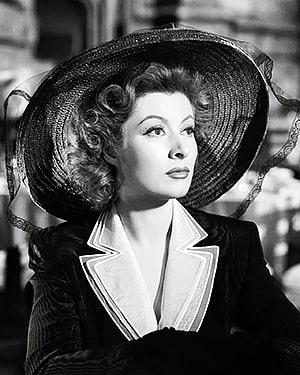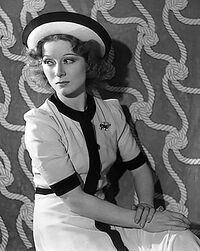Letizia Silvestri
Letizia Silvestri | |
|---|---|
 | |
| Minister of Finance of Alscia | |
| In office 30 April 1908 – 1 March 1939 | |
| Governor | Donatella Rossetti |
| Personal details | |
| Born | 16 January 1878 Xakalen, Xevden |
| Died | 27 April 1970 (aged 92) Bellecôte, Arxaþ, Gylias |
| Political party | National Unity Party |
Letizia Silvestri (Gylic transcription: Letíţia Silvestyri; 16 January 1878 – 27 April 1970) was a Gylian politician. She was Alscia's finance minister in the Donatella Rossetti government, from 1908 to 1939.
Considered the only minister with a stature to match Donatella Rossetti, Letizia was an influential figure in the Alscian economy. She was a pragmatic liberal, sympathetic to social democracy, and played a key role in realising the Donatellist program of state-driven development. She believed the private sector could not be trusted to handle itself, and needed guidance from the public sector, which in turn needed to provide good business conditions through sound economic policies.
Letizia's term as finance minister saw rapid industrialisation, massive public works, and progressive policies which made Alscia a prosperous part of the Cacertian Empire. The combination of shareholderism, progressive taxation, and the creation of a mixed welfare state ensured prosperity was widely spread, contributing to Alscia's high standard of living.
She largely retired from politics after Alscia's dissolution, while making occasional public interventions, and died in 1970.
Early life
Letizia Silvestri was born on 16 January 1878 in Xakalen. She was of Italian descent, from a family that could trace its origins to both Cacerta and Megelan.
The family's financial insecurity left a profound mark on her in childhood, and shaped her later politics. She told Margherita Martini in 1919, "I'm here today to make sure nobody else will go through what I did."
She was educated at home and in informal schools. She joined the National Unity Party in 1899, where she first met Donatella Rossetti, and was briefly arrested and detained after the 1902 coup.
During the Cacerta-Xevden War, she tried to volunteer for the Cacertian Empire, and was given work as a translator and interpreter, since she knew Zineran.
Minister of Finance
Letizia was a candidate in the first Alscian general election. She won election for a district in Xakalen, and was appointed finance minister in the Donatella Rossetti government. The two closely collaborated on economic policies, making Letizia significant to the conception and execution of Donatellist economics.
Letizia's economic stances were broadly pragmatic, progressive, and liberal. She despised classical liberalism and laissez-faire economics, viewing them as immoral in light of the inequality and poverty endured by Gylians in Xevden. She believed that the government had to play a guiding role in the economy, and the private sector should carry out investment and production based on its guidance.
She was instinctively a social corporatist rather than a statist. Instead of direct nationalisation, she worked with the Alscian Development Company to own shares in most Alscian companies, and majority shares in essential areas such as public utilities, infrastructure, and national resources.
She supported the growth of the cooperative sector, and established a close collaboration with Arlette Gaubert, tacitly allowing Gaulette to monopolise the private sector due to Arlette's commitment to a humane economy.
She introduced a progressive tax code, and steadily increased tax rates on wealthy Alscians and large corporations throughout her tenure. Her budgets emphasised redistribution of wealth and welfare provision. She presided over the creation of a mixed welfare state, introducing social insurance programs and benefits, which formed a close partnership with the mutual societies built up during the Gylian ascendancy.
Letizia helped launch massive public works projects that gave Alscia an advanced infrastructure, and introduce free and universal public services. She identified the Salen Canal, linking Xakalen and Sarra, and the provision of free school meals and textbooks as her proudest achievements.
She introduced wealth taxes and capital levies at certain points during the Divide War and Border War, but kept them in place longer than their "temporary" status due to their usefulness. She championed the ideal of the "free breakfast table" and exempted basic foodstuffs from taxation, which appealed to workers.
Monetary policy was a "vexing weakness" of her tenure: Alscia issued its own currency, the lira, but its value was fixed to the Cacertian inganarre, and Cacerta treated the lira as simply as local issue of the inganarre. This constrained monetary policy and frustrated Letizia, who complained in private about having to work around a monetary policy made by Cacerta and for Cacerta.
Donatella recalled that she frequently telegrammed and telephoned the Cacertian government and empresses Elliana and Rosalia to plead for changes in monetary policy.
Reputation
Letizia was described by contemporaries as the most influential cabinet apart from Donatella, and certainly she was the only one with a stature to match.
Economist Leále Tiekat describes Letizia as an "unconventional traditionalist". She had a moralistic streak and largely shared Donatella's belief in frugality and self-improvement, championing efficiency and condemning waste. She believed in balanced budgets, but considered surpluses an "obscene waste" when Alscia needed growth.
She would revise her planned budgets up to the day they were delivered, increasing spending to avoid excessive surpluses. By having the private sector shoulder the costs of modernisation and development, the government could maintain balanced budgets, and thus sound fiscal conditions. Unwilling to break with her belief, she delved into hidden money creation schemes, such as marshalling private sector loans (assisted by Arlette), issuing promissory notes, and trade agreements.
Her vision for Alscia was essentially bourgeois: she sought not a land of workers, but of modestly well-off petites-bourgeois, "sober" farmers, merchants, and successful small businesses and cooperatives. She based her economic policies on the idea that by improving Alscians' material circumstances and physical comfort, it would induce improvements in personal character.
Letizia was one of the most high-profile members of the cabinet. She was recognised for her classical beauty and distinctive wardrobe, which gave her a "buttoned-up" image. She always wore large-brimmed hats in public. She was nicknamed Severa Letizia ("Severe Letizia") because most of her photographs showed her with a determined facial expression.
While she disliked being perceived as harsh, she sometimes played up the image when it benefited her. Colleagues recalled her as rather distant in cabinet meetings, with a habit of staring sharply at whoever was speaking, regardless of whether she agreed with a proposal or not. If a minister remarked that she made them uncomfortable, she would often reply, "If you can't get your idea past me, how do you think you'll stand a chance in the Legislative Council?".
Despite this, she was also helpful to other ministers, being particularly fond of beautification programs, and was the only one who could challenge Donatella and get her to abandon an idea.
Anti-communism
Letizia was vocally anti-communist, an abnormal stance given Alscia's status as a haven for radicals. She often remarked that "wealth redistribution is the only defense a democracy has against communism". Her method was to support egalitarian policies and a humane transformation of modern life along the lines envisioned by Valeria Valente, in order to reduce the appeal of communism. She summarised this at an NLP meeting as follows:
"Poverty creates desperation. A starving man has nothing to lose. Prosperity creates comfort, prudence. We must have a soft, well-fed population, assured of both necessities and comforts, in order to inoculate our state against this scourge."
Donatella recalled that Letizia was personally concerned about maintaining the supremacy of liberals against their radical challengers. Letizia would speak of making sure that the Socialist Party and Social Democratic Party were "domesticated", and would ask the Alscian Police about their files on Alscian communists, much to the annoyance of justice minister Mitsuko Aoyama.
Public works minister Pasái Seţyn, a member of the Socialist Party, described Letizia as being "more blunt and harsh" with socialist and social democrat ministers in cabinet meetings.
Later life
Letizia did not participate in the 1939 referendum. She was personally opposed to Alscia joining the Free Territories, but kept quiet out of respect for cabinet solidarity, and it was this option that won by a landslide.
With Alscia dissolved through admission to the Free Territories, Letizia largely retired from politics. She was now 61, and had been finance minister for three decades, and doubted her experience would be relevant to the Free Territories.
She was included in the honoured citizens list along with the other members of Donatella's government. She was approached by the General Council and offered the position of economic adviser. Although she correctly surmised the position would be a figurehead one and a "glorified retirement", she appreciated the sentiment behind it and accepted it.
Her liberal economics were indeed at odds with the anarchists of the General Council, but she later recalled: "I liked that 31 years in charge of Alscia's finances meant something. I liked that instead of tossing me in the dustbin of history, they gave me a seat of honour and a pension. Better a respected wax figure than a discarded doll."
After the Liberation War ended, Letizia lived in quiet retirement. She published her autobiography in 1960, which was well-received, and occasionally contributed essays to The Economic Journal and other publications. She declined to run for the Senate in 1962, and quipped: "I don't have Donatella's stamina."
In 1967, she praised Aliska Géza, saying, "She's a great finance minister, far greater than I was…and I hope she will be in the ministry for as long as I was."
Death
She died on 27 April 1970 of heart failure, aged 92.
Legacy
Letizia was the first modern Gylian finance minister, and through her conduct and policies set the standard for her successors in the Free Territories and Gylias.
Her fiscal and economic policies formed a key component of Donatellism, and thus served as predecessor to the economic aspects of the Gylian consensus, particularly the provision of social security, a large public sector and high taxation, the primacy of cooperatives, and economic interventionism.
Notably, her successors would break with her last vestiges of conventional economics, rejecting balanced budgets and corporatism in favour of decentralised planning.
Her close cooperation with Arlette Gaubert is seen as a predecent for the Social Partnership Program, and the similar crucial role Agathe Sanna and Agsa perform as the principal private partner of the National Capital Investment Board.
Aliska Géza cited Letizia as a model for how a finance minister should conduct themselves, and often spoke of her admiration for Letizia's unassailable integrity, moral purpose, and forthrightness. Various liberal, centrist, and conservative politicians have similarly evoked Letizia's image as economic spokespersons.
Private life
She was married thrice — the first two ending in divorce, and the third lasting until her husband's death — with no children.
She practiced a mixture of Concordianism and Megelanese traditional witchcraft.

